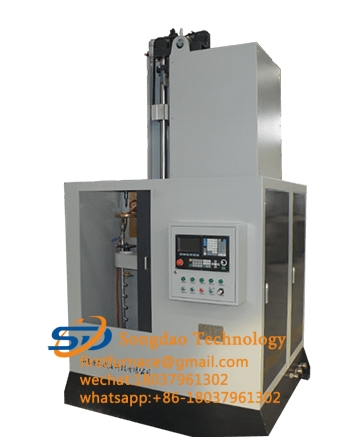- 21
- Nov
Which enterprise is the quenching machine aimed at?
Which enterprise is the quenching machine aimed at?
Quenching machine tool is mainly composed of three parts: quenching machine tool, medium and high frequency power supply, and cooling device; among them, the quenching machine tool consists of bed, loading and unloading mechanism, clamping, rotating mechanism, quenching transformer and resonance tank circuit, cooling system, quenching liquid circulation system, The quenching machine is generally composed of electrical control system, and the quenching machine is generally single station; the quenching machine has two types of structure, vertical and horizontal. The user can choose the quenching machine according to the quenching process. For special parts or special processes, according to the heating process It is required to design and manufacture special hardening machine tools.
Quenching machine tools are used in the heat treatment industry, such as the steel body: smelting, heat treatment and cold treatment, as well as the previous process of smelting and so on.
The purpose of the quenching machine tool: the quenching machine tool is matched with the medium and high frequency power supply to realize the induction quenching process. It is often used for the quenching and heat treatment of gears, bearings, shaft parts, valves, cylinder liners and various mechanical parts.
External quenching series: the external surface of various shafts, rods, tubes and round parts (such as bearings, valves, etc.) is quenched integrally or partially.
Inner circle quenching series: quenching the inner circle of all kinds of pipes and mechanical parts, such as cylinder liners, shaft sleeves, etc., either integrally or partially.
End face and plane quenching series: perform overall or partial quenching on the end face and plane parts of mechanical parts.
Special-shaped parts quenching series: the whole or partial quenching of a certain surface of special-shaped parts.
Extra-large parts quenching series: the overall or partial quenching of large-volume and heavy-weight extra-large parts, such as marine gears, dam gate rails, large oil pipelines, etc.

